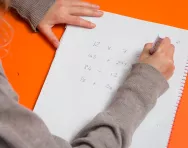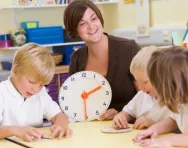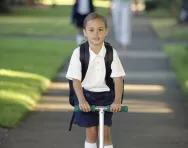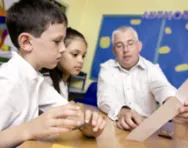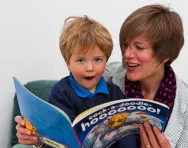Important update from TheSchoolRun
For the past 13 years, TheSchoolRun has been run by a small team of mums working from home, dedicated to providing quality educational resources to primary school parents. Unfortunately, rising supplier costs and falling revenue have made it impossible for us to continue operating, and we’ve had to make the difficult decision to close. The good news: We’ve arranged for another educational provider to take over many of our resources. These will be hosted on a new portal, where the content will be updated and expanded to support your child’s learning.
What this means for subscribers:
- Your subscription is still active, and for now, you can keep using the website as normal — just log in with your usual details to access all our articles and resources*.
- In a few months, all resources will move to the new portal. You’ll continue to have access there until your subscription ends. We’ll send you full details nearer the time.
- As a thank you for your support, we’ll also be sending you 16 primary school eBooks (worth £108.84) to download and keep.
A few changes to be aware of:
- The Learning Journey weekly email has ended, but your child’s plan will still be updated on your dashboard each Monday. Just log in to see the recommended worksheets.
- The 11+ weekly emails have now ended. We sent you all the remaining emails in the series at the end of March — please check your inbox (and spam folder) if you haven’t seen them. You can also follow the full programme here: 11+ Learning Journey.
If you have any questions, please contact us at [email protected]. Thank you for being part of our journey it’s been a privilege to support your family’s learning.
*If you need to reset your password, it will still work as usual. Please check your spam folder if the reset email doesn’t appear in your inbox.
Reception baseline assessment tests explained for parents
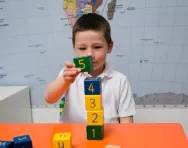
In September 2017 the Department for Education announced that a new assessment in Reception would be introduced as a baseline measure to track pupils’ progress during primary school.
The government said the proposed Reception Baseline Assessment (RBA) would be developed in conjunction with the teaching profession, and would be 'teacher-mediated', meaning it would be administered by a teacher or teaching assistant.
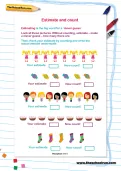
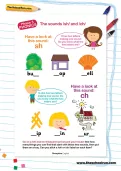
Start the Reception Learning Programme!
- Weekly maths & English worksheets direct
- Follows the National Curriculum
- Keeps your child's learning on track
The focus of the RBA is on communication, language and literacy, and maths. It takes around 15 minutes.
The National Foundation for Educational Research (NFER) designs and delivers the RBA and ran the trial and pilot phases of the assessment and the first two years of its implementation in primary schools.
The RBA data is used to judge how much progress children have made by the end of KS2 (Year 6 SATs). There is no "pass" or "fail" or numerical score, and the results of the RBA are not used to track individual pupils or to judge schools' Foundation Stage performance.
With the introduction of the Reception Baseline Assessment, children no longer have to take KS1 SATs when they reach the end of Year 2. These have become optional since September 2023.
The current Phonics Screening Check, carried out at the end of Year 1 to assess reading ability, remains unchanged.
What does the Reception Baseline Assessment look like?
The RBA is about 15 minutes long, covering literacy, language, communication and early maths. Teachers administer the assessment and record their results electronically.
The RBA is interactive and practical, and the DfE suggests that "in most cases pupils should not be aware that they are being assessed". Children are asked to answer questions verbally or by pointing at or moving objects. If children need a break during the assessment, the teacher can pause at any time.
The RBA is "inclusive and accessible to the vast majority of children as they join school in Reception. Most children with special educational needs or disabilities (SEND) or English as an additional language (EAL) will be able to take part in the assessment." There are also modified materials available for children with visual and hearing impairments.
The RBA is administered in normal teaching time.
For more information about the Reception Baseline Assessment, read the Department for Education's parent leaflet.
How does the Reception assessment work?
The Department for Education says that by giving each child a Baseline Assessment when they first start primary school, schools will not only have a clearer idea of how much progress their pupils are making, but should also be able to identify which children are likely to need extra help.
The government feels that the RBA helps to recognise the good progress that schools make with disadvantaged lower-ability children, and gives a "snapshot of where pupils are when they arrive at school".
Assessment results are not be used for the school's purposes in measuring progress. Children's school reports will not include scores, and schools will continue to use the Early Years Foundation Stage Profile as a teacher-observed, complete assessment of each individual child's development and progress in Reception.
How did parents and teachers reacted to the Reception assessments?
The idea of testing young children was unpopular amongst parents in 2015, and the same is likely to apply now.
Children of just four and five already have to contend with the anxiety of starting school and are often daunted by unfamiliar tasks at this age.
Concentration levels may well be an issue, particularly for summer-born pupils who are almost a whole year younger than their autumn-born peers.
Assessments administered on a one-to-one basis are time-consuming for teachers, too.
Reception Baseline Assessment before 2017
The RBA has a long and complicated history.
In September 2016, the Department for Education was due to introduce a Reception Baseline Assessment for all children in Reception in England. This was to assess each child’s level of development at the beginning of their formal schooling in order to measure their progress by age 11. The government suggested the new assessments would ensure higher standards and allow all pupils to receive the attention they needed to build on areas of weakness.
Schools in the September 2015 pilot of the assessments were free to choose from a number of approved assessments.
- About a third of schools were planning to opt for assessments carried out one-to-one with a Reception teacher, which focused on the very basics of learning such as counting, picture, letter and number recognition. The NFER assessment used common Reception classroom resources like counting beads, plastic shapes and number and picture cards. Children worked through the activities (which took around 30 minutes) while the teacher recorded the child’s progress on a digital device or in individual paper pupil booklets.
- The other two-thirds of schools had decided to use an assessment that relied on teachers' observations of children's skills within the normal day-to-day school routine. This method of assessment, devised by a small educational consultancy called Early Excellence, was designed so that children didn't even know they were being assessed.
In summer 2016 the Baseline Assessment was put on hold indefinitely, and teachers were instructed to continue to complete the Early Years Foundation Stage Profile (a broad assessment of your child’s abilities in all areas of their learning and development), pending further decisions about assessment in Reception.
The decision was made because the government conceded that the three different methods of baseline assessment that schools were able to choose from in 2015 – a computer-based assessment, an assessment based on tasks and observation, and an observation-only assessment – were not comparable.
The same child could take all three types of assessment and come out with different results. This meant that the results of the baseline assessment in its 2015 form couldn't be used as a comparison between schools, or to accurately measure children's progress from Reception to Year 6.

